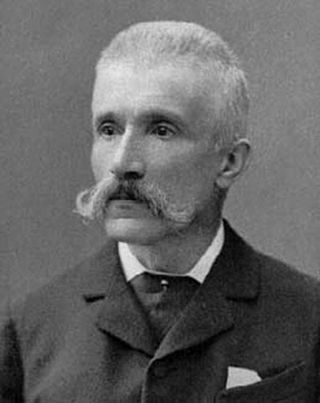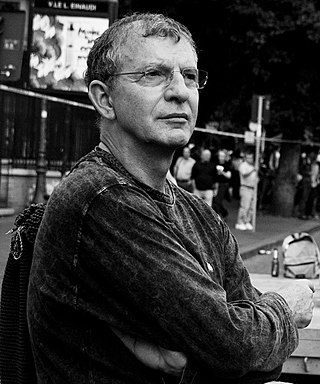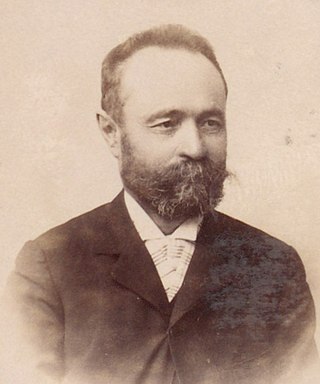
Umberto Eco was an Italian medievalist, philosopher, semiotician, novelist, cultural critic, and political and social commentator. In English, he is best known for his popular 1980 novel The Name of the Rose, a historical mystery combining semiotics in fiction with biblical analysis, medieval studies and literary theory, as well as Foucault's Pendulum, his 1988 novel which touches on similar themes.

Francesco Brioschi was an Italian mathematician.

Aldo Busi is a contemporary Italian writer and translator, famous for his linguistic invention and for his polemic force as well as for some prestigious translations from English, German and ancient Italian that include Johann Wolfgang Goethe, Lewis Carroll, Christina Stead, Giovanni Boccaccio, Baldesar Castiglione, Friedrich Schiller, Joe Ackerley, John Ashbery, Heimito von Doderer, Ruzante, Meg Wolitzer, Paul Bailey, Nathaniel Hawthorne.

Laura Veccia Vaglieri (1893–1989) was an Italian orientalist who made significant contributions to Arabic and Islamic studies in Italy. She was a scholar and served as a professor at the University of Naples "L'Orientale". Her research focused on the historical and institutional analysis of the Arab and Muslim world, and she authored several books on these topics. Additionally, Veccia Vaglieri wrote numerous articles on early Islam and on Ibadism. Her work also included contributions to the Encyclopaedia of Islam and the history of research on Ibāḍī studies.

Peeter Torop is an Estonian semiotician. Following Roman Jakobson, he expanded the scope of the semiotic study of translation to include intratextual, intertextual, and extratextual translation and stressing the productivity of the notion of translation in general semiotics. He is a co-editor of the journal Sign Systems Studies, the oldest international semiotic periodical, the chairman of the Estonian Semiotics Association and professor of semiotics of culture at Tartu University.
Anton Popovič was a fundamental Slovak translation scientist and text theoretician. He is recognized for his important contributions to the modern development of translation studies.
Stefano Arduini is a scholar of linguistics, rhetoric, semiotics and translation. He is Full Professor of Linguistics at the University of Rome Link Campus where he is the director the Publishing Professionals Master's degree. He teaches Theory of Translation at the University of Urbino, and is the president of San Pellegrino Unicampus Foundation in Misano Adriatico (Rimini).

Henri Meschonnic was a French poet, linguist, essayist and translator. He is remembered today as both a theoretician of language and as a translator of the Old Testament. The 710-page Critique du rythme, probably remains his most famous theoretical work. As a translator of the Old Testament he published many volumes, including Les cinq rouleaux in 1970 ; Jona et le signifiant errant in 1998 (Jonah); Gloires in 2000 (Psalms); Au commencement in 2002 (Genesis); Les Noms in 2003 (Exodus); Et il a appelé in 2005 (Leviticus); and Dans le désert in 2008 (Numbers).

Via della Spiga is one of the Italian city of Milan's top shopping streets, forming the north-east boundary of the luxurious Quadrilatero della Moda, along with Via Monte Napoleone, Via Manzoni, Via Sant'Andrea and Corso Venezia.
In translation, Realia are words and expressions for culture-specific material elements. The word realia comes from medieval Latin, in which it originally meant "the real things", i.e. material things, as opposed to abstract ones. The Bulgarian translators Vlahov and Florin, who were the first to carry out an in-depth study of realia, coined the modern sense of the word. They indicate that since realia carry a very local overtone, they often pose a challenge for translation. Realia must not be confused with terminology: the latter is primarily used in the scientific literature to designate things that pertain to the scientific sphere, and usually only appears in other kinds of texts to serve a very specific stylistic purpose. Realia, on the other hand, are born in popular culture, and are increasingly found in very diverse kinds of texts. Fiction, in particular, is fond of realia for the exotic touch they bring.
On Linguistic Aspects of Translation is an essay written by Russian-American linguist Roman Jakobson in 1959. It was published in On Translation, a compendium of seventeen papers edited by Reuben Arthur Brower. On Translation discusses various aspects of translation and was published in Cambridge, Massachusetts.
The Consorzio ICoN is an interuniversity consortium for Italian Studies established in 1999. It consists of 21 Italian universities and focuses on philology and cultural studies. The consortium is based and administrated at the University of Pisa and is supported by the Italian Ministry of University and Research. It aims at diffusing Italian language, culture and literature.

Augusto Ponzio is an Italian semiologist and philosopher.
Semiotics of culture is a research field within semiotics that attempts to define culture from semiotic perspective and as a type of human symbolic activity, creation of signs and a way of giving meaning to everything around. Therefore, here culture is understood as a system of symbols or meaningful signs. Because the main sign system is the linguistic system, the field is usually referred to as semiotics of culture and language. Under this field of study symbols are analyzed and categorized in certain class within the hierarchal system. With postmodernity, metanarratives are no longer as pervasive and thus categorizing these symbols in this postmodern age is more difficult and rather critical.

The San Pellegrino University Foundation was an educational institution established in 2010. It owes its academic heritage to the Servite Order which in 1973 founded the Liceo Linguistico San Pellegrino, and in 1987, it founded the Scuola Superiore per Interpreti e Traduttori.
Aleksandăr Lûdskanov was a Bulgarian translator, semiotician, mathematician, and expert on machine translation. Ludskanov's work focused on linking translation and semiotics by defining the key component of translation as semiotic transfer, which he defined as replacing the signs that encode a message with signs from another code while doing the utmost to maintain "invariant information with respect to a given system of reference." In 1975, Ludskanov published an article called "A semiotic approach to the theory of translation" that argued that semiotics "does not provide the concept of semiotic transformation, though such transformations certainly exist."

Susan Petrilli is an Italian semiotician, professor of philosophy and theory of languages at the University of Bari, Aldo Moro, Italy, and the seventh Thomas A. Sebeok Fellow of the Semiotic Society of America. She is also International Visiting Research Fellow at the School of Psychology, the University of Adelaide, South Australia.

Italo Pizzi was an Italian academic and scholar of Persian language and literature. He was the first to establish the academic field of Persian language and literature in Italy.

Eugenio Soncini was an Italian architect.

Palazzo Arese was a 16th century baroque palace and seat of a branch of the House of Arese in Milan, Italy. It was located adjacent to Casa Fontana Silvestri near the Porta Orientale. The palazzo was demolished in 1943 following damage sustained during the bombing of Milan in World War II.












